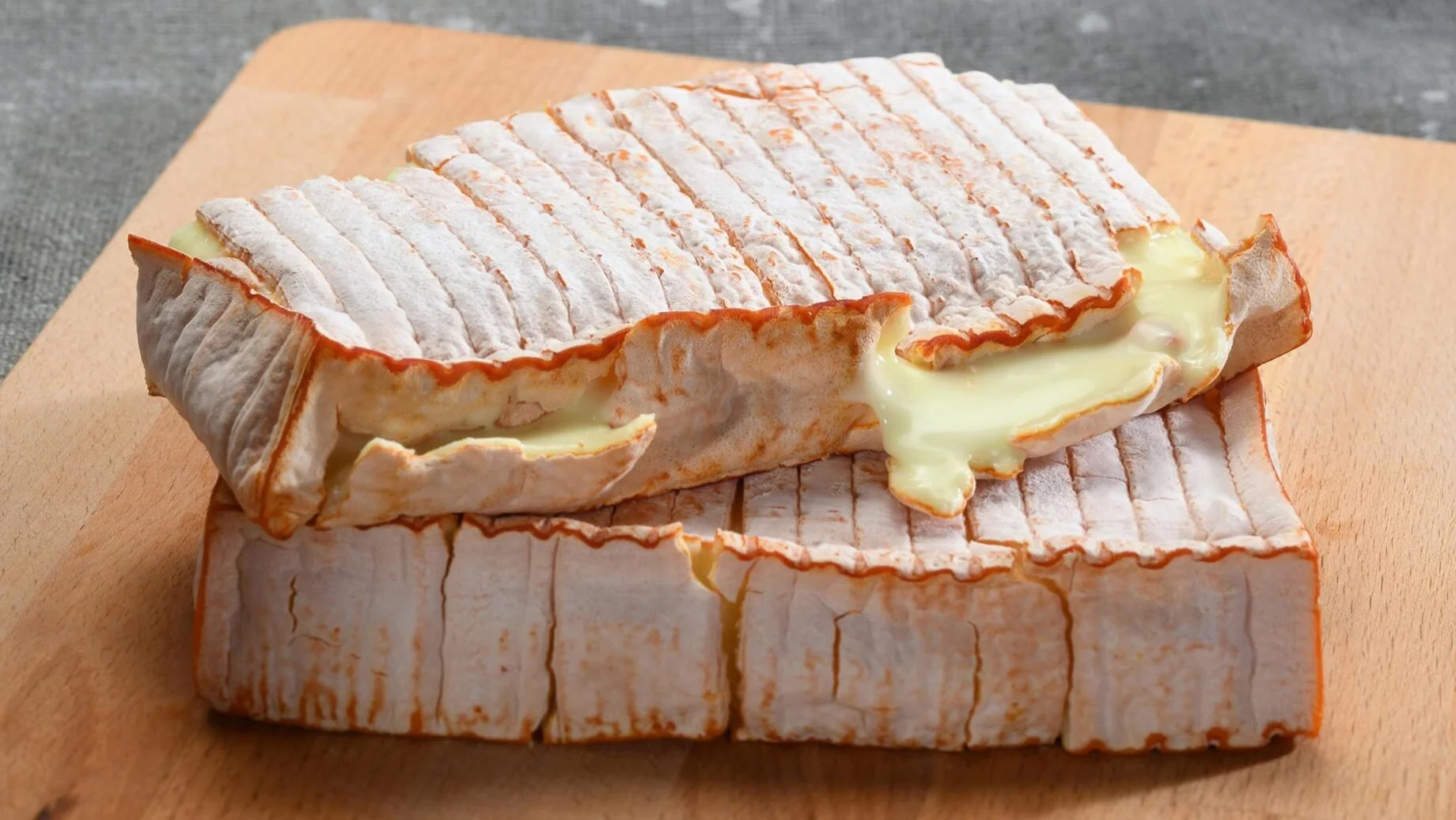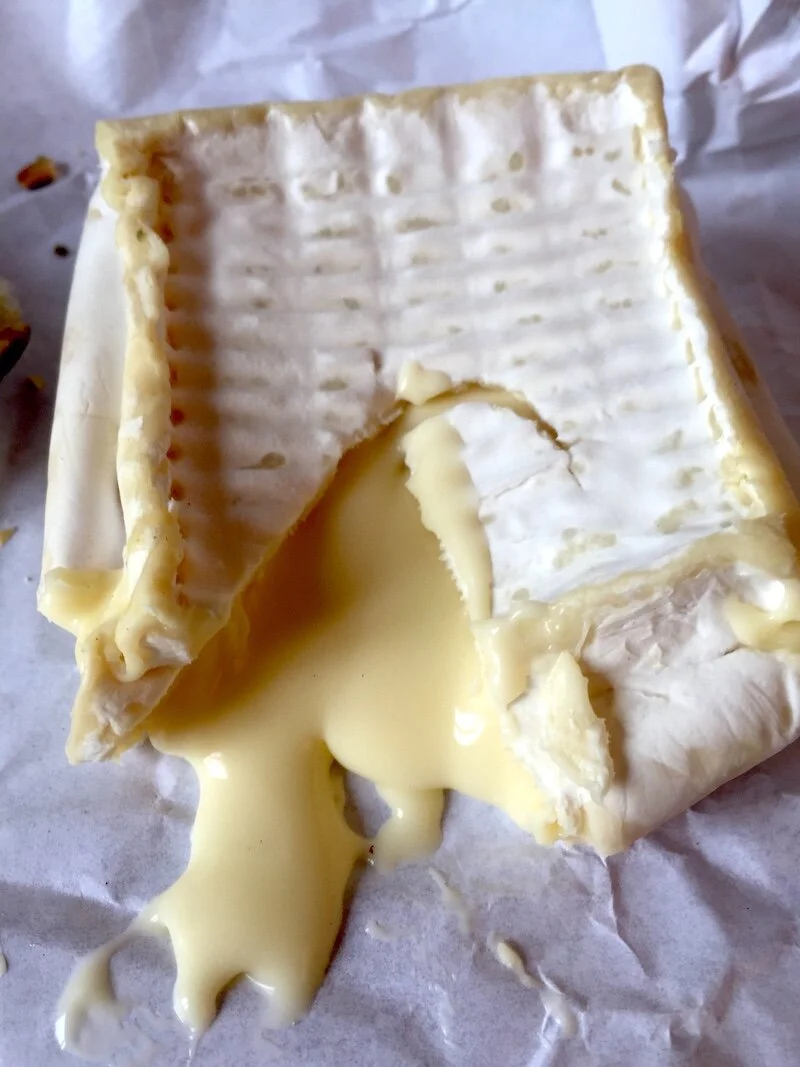Photo: Emilia Romagna Turismo
World Cheese Encyclopaedia - Each Sunday learn all about a new cheese.
This week Formaggio di Fossa from Italy.
Photo: Antoine Fleury-Gobert
Country: Italy 🇮🇹
Region: Emilia-Romagna
Made from: Sheep and cow’s milk
Pasteurised: No
Texture: Firm, open
Taste: Wood, truffle, moss
Certification: DOP
Aging: 3 months
Formaggio di Fossa is a cheese from Sogliano al Rubicone in the Emilia-Romagna region of Italy. The cheese's name, which literally means "cheese of the pit", is derived from the process of ripening the cheese in special underground pits dug in tuffrock. The cheese is currently produced in the areas between the Rubicon and Marecchia river valleys. In 2009 formaggio di fossa was granted Denominazione di Origine Protetta status, the Italian equivalent of protected designation of origin.
Fossa cheese is made with either sheep's milk, cow's milk, or a mixture of the two. The cheese typically matures around 30 days before being placed in the "fossa", a pit dug into the ground and lined with straw. The pit is prepared by burning straw inside to remove moisture and sterilize the space. The cheese is wrapped in cloth bags and placed in the pit, which is then closed off entirely while the cheese matures for an additional 80 to 100 days. The sealing of the pit limits the oxygen available to the cheese, enabling a process of anaerobic fermentation. After being removed from the pit, the cheese is allowed to ripen for an additional three months.
Photo: rivieradirimini.it
In the pits, the cheese takes on the aroma of wood, truffles and moss from the environment in which it is placed. The flavor can range from sweet to sharp, to a little bitter, depending on how much milk is used and on the pits themselves.
The two typical Formaggio di Fossa are: Sogliano’s Formaggio di Fossa, considered the most traditional one, and the newer Talamello.
Photo: Emilia Romagna Turismo
Formaggio di Fossa from Sogliano sul Rubicone is the oldest, characterized by ancient processes of ripening the cheese in special underground pits that date back in the past, while Talamello’s Formaggio di Fossa has more recent orgins. The cheese that originates in Sogliano has a strong, decided taste, mostly tending to spicy, with a relatively clear, an overwhelming scent and rich smell.
The “Amber of Talamello”, as the poet Tonino Guerra liked to call it, has, instead, a soft colour, ranging from pale yellow to amber and it tastes sweet to spicy and braided a milder and delicate aroma.
The scent that the two cheeses have in common has hints of undergrowth, truffles, mushrooms, sulphur, musk and wood with different variations due to milk type and the position inside the pit. Its preparation is a ritual. After being cleaned and burning straw inside to sterilize the area, the pits are covered with straw retained by rods to prevent contact of the cheese with the walls of the tuff pit. On the bottom, planks of wood are the basic forms of cheese that, once cleaned and placed in cotton bags with its weight, date and name of its owner, are arranged in order of right positioning of cheese owners themselves. Buried in August, the cheese are removed from the pit at the end of November: in Talamello it’s between 5th and 12nd, while in Sogliano between 18th and 26th of November.
Along with it’s unique flavor, Formaggio di fossa di Sogliano DOP has specific features. It is a sheep, cow or mixed cheese. The rind is absent or very thin, soft, ivory-colored, often with some mold spots. The surface is greasy and humid, while the interior is soft and ivory-colored, with light straw-yellow shades.
History
Formaggio di Fossa originates from ancient legends dating back to 1400, when the troops of Alfonso of Aragon, son of the King of Naples, took refuge at Malatesta (historical family of Forlì), after being defeated by the French. Not being able to feed the troops of the refugee, the lords of Forli, let the soldiers rob the farmers. In this way, farmers learned to hide their food in underground pits.
This is the legend, but reality tells of a practical need, to transform the overproduction of milk into cheese then stored in a "fossa", a pit dug into the ground. Sogliano sul Rubicone and Talamello have always been traditional areas of cheese production and in the summer, it was normal to have overproductions of milk that, once transformed into cheese, were preserved in places characterized by very good condition: the grain pits. About three meters deep, the pit must have at least ten years of life, because only after this period the pit develops inside the bacteria necessary to transforming a simple cheese into a real delicacy.
Over time, Fossa cheese production has been improved. Today’s aging pits are more likely to be made out of sandstone, which are clean and lined with a suitable material for aging.
Photo: Vinitaly Wine Club
How to enjoy it
Ideally go to one of the festivals in Sogliano or Talamello when the bags of cheese are taken out in a formal ‘sfossatura’. In Sogliano it is typically on November 25th, the day dedicated to Saint Catherine of Alexandria, who was the saint alleged to have suffered martyrdom in Alexandria of Egypt early in the fourth century. The date also coincides with the end of both the harvest and sowing period when country folk would prepare for the winter suspension of their work.
These are well-publicized event where the cured cheeses are brought out in abundance and served either raw or on a variety of local dishes that include polenta, pasta and tripe. Complimentary wines are served and music celebrates the cheese’s unearthing.
A friable texture allows Formaggio di Fossa to be easily cut in flakes on pasta or vegetables. Formaggio di fossa di Sogliano is perfect with meat, especially escalope or roast. It also can be cut in slices, and covered with fruit jams or honey.
These cheeses pair well with red or dessert wines. Simple red wines, or important reds, such as Amarone, Brunello, Sagrantino or Aglianico.
Source: paradiespossible.com, winefoodemiliaromagna.com, emiliaromagnaturismo.com, riviera.rimini.it, cheeseconnoisseur.com, wikipedia, vinitaly.com,
Looking for a different cheese? Search the whole Cheese Encyclopaedia here.































